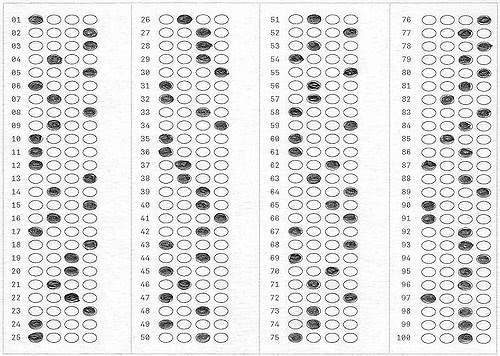
Flickr user Chris
In 2016, around 1.5 million high school students sat the ACT test, a number that has jumped in recent years to rival the 1.7 million that took the SAT. While the latter is traditionally a bit more popular for students, the ACT plays to different strengths and utilizes a different scoring system, both of which differentiate it from its counterpart exam. Even though the popularity of the ACT has spiked, it is not a test that should be taken lightly. There are steps that students can take to ace the exam, the most important of which is to take the practice exam, the PreACT.
What is the PreACT?
Much like the PSAT, the PreACT provides an opportunity for students to undergo a “dry run” of sorts, sitting through a practice exam to rehearse both the mechanics of answering exam questions, as well as, simply, the experience of taking a major test. Students who haven’t taken a major exam before (state tests don’t really compare) can sometimes feel unprepared for the scene that the SAT or ACT presents, a closed-door room with a ticking clock and hours of time spread out in intervals. The PreACT is a great way to learn how to manage your time, figuring out how much time it will take you to answer a certain section or write an essay in a real, test-taking environment. You might think you know because you’ve timed it at your kitchen table or a desk at your tutor, but practicing in the environment itself is important.
Questions are taken from previous exams
You should also keep in mind that PreACT exams take questions from past exams and present them for you to answer. Examining questions that past students have had to consider in the same test-taking environment can give you insight into what kind of questions the actual exam will ask. For example, if you show up to your practice exam and are surprised to see a question about the surface area of a cylinder, you now have an idea of a small area that you should study, because you know for a fact that students have had to know it before on the exam. Experience is key, and while those thick books and online test-prep questions are important, anyone who has sat the ACT will tell you that reading the questions at home and seeing them printed in a test packet are extremely different experiences.
Practicing can ease your nerves
When you enter the ACT room to take the actual exam for the first time, you’ll be nervous, and that’s fine (as my father always says, if you’re not nervous before big moments, you’re either not human or lying.) However, taking the PreACT can help to curb those feelings. Many of the nerves you’ll feel will result from not knowing what to expect, which is perfectly reasonable. After all, you’ve never sat through a test of this level of importance before. If you take the PreACT, though, you’ll at least have been able to know what the room looks like, how it feels to receive a test packet, how to manage your time. Eliminating even one aspect of the unknown can help to eliminate small sources of anxiety, which helps because you’ll need every synapse of your brain firing to answer the questions.
There’s no harm in taking the PreACT
Lastly, and most simply of all, you have absolutely nothing to lose by taking the PreACT, besides a couple of hours on a Saturday morning (when all your friends will be sleeping anyway.) There are few things more constructive you could be doing with that time than taking a test that doesn’t count for anything but will assist you when you sit for the real thing. So, why not see what it’s like? You wouldn’t show up for a basketball game without warming up first, taking a few practice shots. The same logic applies here. If you take the PreACT, you’ll be able to know what to expect, when to expect it, and how you’ll feel when you sit the test.
—
Use College Raptor to discover personalized college matches, cost estimates, acceptance odds, and potential financial aid from schools around the US—for FREE!





